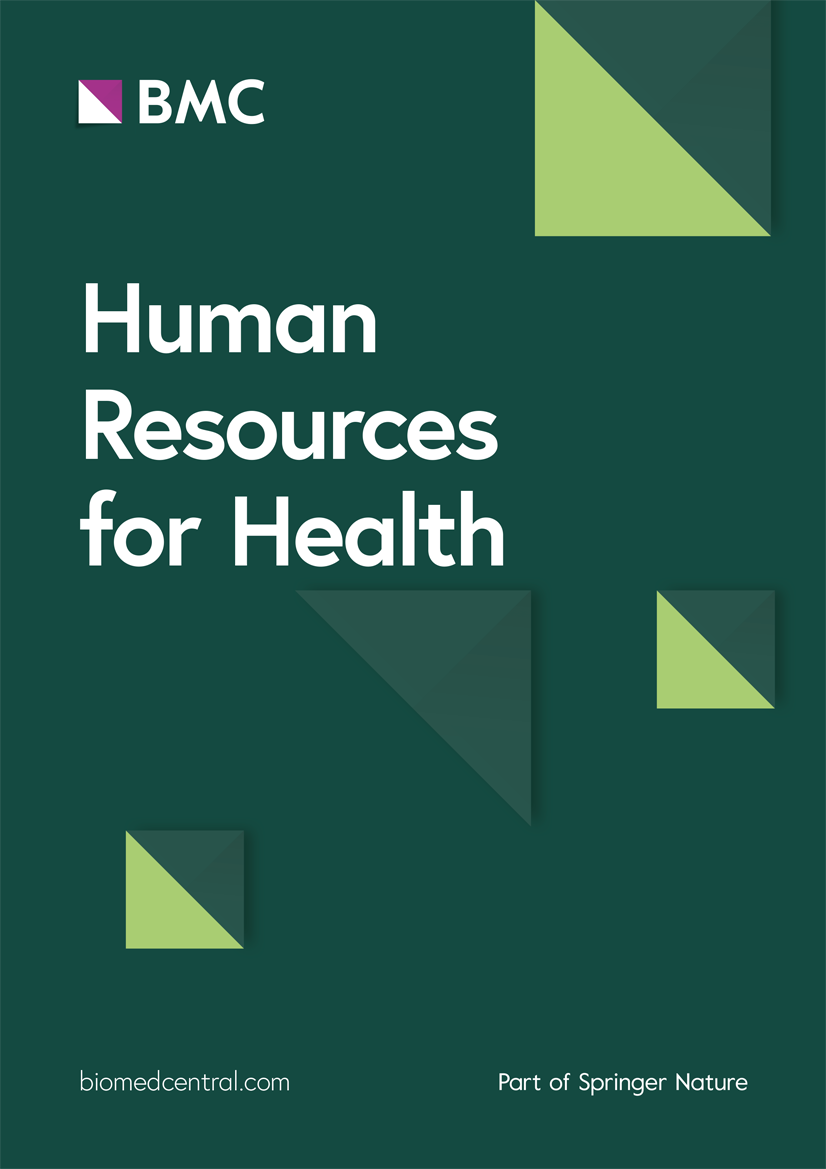BMC Psychiatry volume 25, Article number: 310 (2025) Cite this article
Major depressive disorder (MDD) is the most prevalent mental health disorder globally. However, the association between depressive symptom trajectories in the early period and subsequent mental health outcomes remains not fully elucidated. This study aimed to delineate the depressive symptom trajectories during the initial phase of treatment, identify baseline characteristics associated with these trajectories, and explore the association of trajectories with subsequent quality of life and suicidal ideation.
Participants were from the Depression Cohort in China. The diagnosis of MDD was assessed using the Mini-International Neuropsychiatric Interview (M.I.N.I.). Information on depressive symptom severity, quality of life, suicidal ideation and other demographics were collected. Latent class trajectory modeling was used to identify distinct classes of depressive symptom trajectories.
A total of 566 patients with MDD were included, and we identified 3 categories with differential trajectories characterized by improving class (66.7%), moderate decreasing class (27.7%), and persistent high class (5.6%). Compared to the improving class, severer anxiety and depressive symptoms at baseline increased the odds of belonging to the moderate decreasing class and persistent high class. Both moderate decreasing class and persistent high class were associated with increased risks of subsequent diminished quality of life. Additionally, only persistent high class was associated with a higher risk of subsequent suicidal ideation.
Severe baseline anxiety and depressive symptoms identify a subpopulation of persons living with MDD who evince a greater likelihood of symptom worsening over time as well as greater decrements in quality of life and worsening measures of suicidality.
Major depressive disorder (MDD) is the most common and disabling disorder globally [1]. It involves a depressed mood or loss of pleasure or interest in activities for long periods of time [2]. The World Health Organization (WHO) estimates that approximately 280 million people suffer from MDD worldwide, with an estimated 5% of adults experiencing MDD [2]. The China Mental Health Survey have reported that the lifetime prevalence of MDD in China is 3.4%, with a 12-month prevalence of 2.1% [3]. It is well established that MDD not only has negative impact on social function and quality of life [4, 5], but also contributes to a loss of productivity and economic burden associated with treatment [6, 7]. Moreover, MDD even poses a substantial risk for suicidal behaviors, placing a heavy burden on individuals, families and communities [2, 8, 9].
Available evidence aimed at determining heterogeneity of MDD has identified multiple groups with differential illness trajectories [10,11,12]. Existing studies have indicated that patients with MDD generally exhibited 2–4 distinct depressive symptom trajectories, with different trajectories exhibiting different responses to outcomes [11,12,13]. Therefore, early identification and trajectory modeling in clinical practice, is crucial for predicting long-term outcomes and tailoring more effective interventions to improve patient prognosis.
Compelling evidence have indicated that the trajectories of depressive symptom are associated with many factors, including biological, behavioral, medical, psychological and social domains [10, 12, 14]. For instance, baseline depression severity is considered as the most significant factor of subsequent trajectory, with more severe depression severity at baseline potentially predicting poorer response [1, 12]. Additionally, some demographic and psychological characteristics have been to reliably predict depressive symptom trajectories [15]. Herein, we attempt to identify baseline characteristics associated with trajectory membership, which is crucial for predicting the progression of depressive symptom and implementing interventions to meet the specific needs of patients.
Previous research has highlighted that distinct symptom trajectories are associated with different treatment outcomes [16]. The first 12 weeks of treatment is a critical period during which therapeutic interventions can significantly influence the development of depressive symptoms [17]. The identification of depressive symptom trajectories in the early phases of treatment is critical, as Scott et al. and Terrill et al. demonstrated that early changes in symptom severity can effectively predict long-term outcomes [10, 11]. However, the association between the depressive symptom trajectories in this early period and subsequent mental health outcomes, such as quality of life and suicidal ideation, remains not fully elucidated. Quality of life is a subjective, patient-centered outcome that refers to how a health condition affects a person’s total well-being, encompassing various domains such as emotional, social, and physical health [18]. Quality of life is severely affected in MDD, and it could even continue so after an apparent clinical improvement [19]. Impaired quality of life is not only a consequence of MDD but also a risk factor for relapse and chronicity [20]. Suicidal ideation, defined as thoughts or wishes about ending own life, is a grave manifestation of depression [21]. A meta-analysis has revealed that the prevalence of suicidal ideation in patients with MDD was 37.7% [9]. The presence of suicidal ideation could be particularly concerning, as it may indicate a poor response to treatment and represent an increased risk of future suicide [8, 22].
However, prior studies may have predominantly focused on the impact of depressive symptom severity at a single assessment (e.g., baseline) on quality of life and suicidal behaviors [23, 24], which neglects charting the course of the disease. Patients with MDD may experience dynamic changes in depressive symptoms, and research suggests that only the persistent high trajectory of depressive symptom is predictive of subsequent poorer outcome [25, 26]. Given the heterogeneity in the developmental trajectories in patients with MDD, it is imperative to explore these trajectories and their association with subsequent outcomes comprehensively. Understanding the evolution of depressive symptoms and their influence on subsequent consequences is imperative for the development of effective preventive strategies and targeted intervention.
Herein, we conducted this study to (1) identify different trajectories of depressive symptoms over the course of 12-week treatment in patients with MDD; (2) investigate the baseline characteristics associated with membership of these trajectories; (3) explore the association of different trajectories with subsequent quality of life and suicidal ideation.
The current study used data from patients with MDD in the Depression Cohort in China (DCC) study (ChiCTR registration number 1900022145), which is an ongoing, dynamic, prospective population-based cohort study. A detailed description of the DCC study design has been described elsewhere [27, 28].
In the current study, the patients with MDD were recruited from March 2019 to March 2023. The inclusion criteria for the patients with MDD were as follows: (1) aged 18 to 65 years; (2) diagnosed with MDD by trained psychiatrists using the Mini-International Neuropsychiatric Interview (M.I.N.I.) [29]; (3) total score of Patient Health Questionnaire-9 (PHQ-9) ≥ 10 [28]; (4) prescribed with antidepressants. The exclusion criteria were as follows: (1) diagnosed with other mental disorders (e.g., schizophrenia, bipolar disorder, etc.); (2) history of neurological diseases; (3) severe physical disease; (4) alcohol/substance abuse in the past 6 months; (5) pregnancy or breastfeeding; and (6) inability to understand study questionnaires or provide informed consent.
This study received ethical approval from the institutional review board of Sun Yat-sen University School of Public Health (L2017044), and the study protocol was approved by the Ethical Review Boards of all the participating centers. All participants provided informed consent. All personal information in the study data has been deidentified to protect the privacy of the participants.
In this study, we collected data at baseline, weeks 4, 8, 12, 24, 48, and 72. The data of baseline to 12-week were used to explore the depressive symptom trajectories, and the data of 12-week to 72-week were adopted to examine the association of depressive symptom trajectories with subsequent quality of life and suicidal ideation. A total of 1000 patients with antidepressant treatment were enrolled at baseline. During 12-week follow-up period, 134 participants withdrew from the study, and 70 participants did not reach the follow-up date. Generally, the trajectory analysis requires at least three measurements [30], so 147 participants with less than three measurements of depressive symptoms were excluded. After further excluding patients who had missing data on quality of life (n = 94) or suicidal ideation (n = 93) at 12-week follow-up period, the current study ultimately included 556 patients with MDD. The detailed recruitment procedure and timeline were shown in Figure S1 and Figure S2.
Assessment of depressive symptom
Depressive symptoms at baseline to 12-week follow-up were measured using the Patient Health Questionnaire-9 (PHQ-9) scale [31]. The scale showed satisfactory reliability in this study (Cronbach’s alpha was 0.753–0.922). Participants were asked about the frequency of depressive symptoms over the past two weeks on a 4-point scale ranging from “not at all” (= 0) to “nearly every day” (= 3). The total score of PHQ-9 ranges from 0 to 27, higher scores indicated more severe depressive symptoms, and a cut-off score of ≥ 10 were identified as moderate and severe depressive symptoms [32].
Assessment of quality of life
The Chinese version of 12-item short-form health survey (SF-12) was used to assess the quality of life at 12-week to 72-week [33]. The SF-12 scale contained 12 items that could be measured eight domains of quality of life [34], including physical functioning, role limitations due to physical problems, bodily pain, general health perceptions, vitality, social functioning, role limitations due to emotional problems, and general mental health. Based on the eight domains, two dimensions of the Physical Component Summary (PCS) and the Mental Component Summary (MCS) were further formulated, and scores of two dimensions were calculated. All scores range from 0 to 100, with higher scores indicating better quality of life [35]. The scale showed satisfactory reliability in this study (Cronbach’s alpha was 0.830–0.845 for PCS; 0.877–0.883 for MCS).
Assessment of suicidal ideation
Suicidal ideation in the past week was measured at 12-week to 72-week follow-up using the Chinese version of Beck Scale for Suicide Ideation (BSSI) [36]. The scale showed satisfactory reliability in this study (Cronbach’s alpha was 0.783–0.856). The first five items of the BSSI were used to assess the severity of suicidal ideation in the past week on a 3-Likert scale from 0 to 2. The total score ranges from 0 to 10, with higher scores indicating more severe suicidal ideation [37].
Demographic and health-related data were collected using self-report questionnaire [28]. Demographic information included age, sex, education level (below undergraduate, undergraduate or above), living arrangement (single, living with relatives, living with non-relatives), marital status (single, married, divorced or widowed), household income per month (< 10,000 yuan, 10,000–19999 yuan, > 20,000 yuan). Health status and behaviors included current smoking, current drinking, history of chronic disease, and exercise habit. Current smoking/drinking was assessed by asking the participants how many days they smoke/drank alcohol during the last 30 days, and those answered one or more days were classified as current smoking/drinking. History of chronic disease was defined as the prevalence of any of the following: (1) hypertension; (2) diabetes; (3) heart disease; (4) stroke; (5) thyroid disease; (6) tumors. Exercise habit per week was measured by asking the following question: “have you ever exercised at least once a week for more than 30 min?”.
Psychological and clinical characteristics consisted of anxiety symptoms, resilience, childhood trauma, first-onset MDD, antidepressant drug treatments for MDD, and family history of MDD. The severity of anxiety symptoms during the past two weeks was measured using the Generalized Anxiety Disorder-7 (GAD-7) [38]. Resilience was assessed using the Connor-Davidson Resilience Scale (CD-RISC) [39]. The experience of childhood trauma was measured using the Chinese version of the Childhood Trauma Questionnaire-28 item Short Form (CTQ-SF) [40]. Antidepressant drug treatments for MDD at baseline and during the 3 months were prescribed by psychiatrists based on clinical evaluation. According to the WHO Anatomical Therapeutic Chemical (ATC) classification, antidepressants were classified as selective serotonin reuptake inhibitors (SSRIs, ATC-code: N06AB) and other antidepressants (ATC-codes: N06AA, N06AF, N06AG, N06AX). The use of antidepressants was categorized as SSRIs only, other antidepressants only, and combination of SSRIs and other antidepressants.
In this study, the missing data of the potential covariates were imputed using multiple imputations (five imputation sets) by chained equations.
First, descriptive analyses were conducted to describe the sample characteristics, and the data were expressed as median (interquartile range, IQR) for continuous variables and frequencies (percentages) for categorical variables.
Second, we used latent class trajectory models (LCTM) to identify trajectories of depressive symptoms over time [41]. LCTM is a specialized form of finite mixture modelling, and is designed to identify latent classes of individuals following similar progressions of a determinant over time. Moreover, LCTM has been widely employed to model symptom trajectories in psychiatric disorders, offering a robust method to capture heterogeneity in treatment responses [13]. For the current analysis, individual class membership was assigned based on depressive symptoms scores measured at 4 time points over the 12-week follow-up. Missing data were omitted by default.
To determine the optimal number of trajectory classes, models with increasing number of latent classes (from 1- to 5-class models) were fitted to the data, and the best-fitting model was selected according to the following goodness-of-fit indices: Akaike’s Information Criterion (AIC), Bayesian Information Criterion (BIC), samples-size-adjusted BIC (aBIC), and entropy. Lower AIC, BIC, and aBIC suggest a more parsimonious model [42]. Entropy ranges from 0 to 1, and higher entropy indicates a better model fit, with values approaching 1 indicating a clear delineation of classes [43]. Aside from fit statistics, average posterior probability of assignment (APPA) of each trajectory group (> 0.70) and class size (≥ 2% of the population) were also taken into consideration in model selection [44].
Third, multinomial logistic regression modelling was used to investigate the association of baseline characteristics with identified trajectories. These models were weighted by the inverse of the probability of trajectory membership derived from the posterior probability estimates.
Fourth, the linear mixed model with the person-specific random intercept was used to explore the associations of depressive symptom trajectories with subsequent quality of life and suicidal ideation. Three models were conducted to assess the impact of potential covariates based on previous literature. Model 1 was adjusted for follow-up time to control for possible differences among different surveys. Model 2 was further adjusted for age, sex and other demographic covariates with different distributions among depressive symptoms trajectories (Table S2), including household income, current smoking, current drinking, exercise habit and history of chronic disease. Model 3 was additionally adjusted for psychological and clinical characteristics, including anxiety symptoms, resilience, childhood trauma, first-onset MDD, and use of antidepressants.
Fifth, to examine whether any attrition bias from the missing data impacted our results, we conducted sensitivity analyses to repeat the main analyses in a full sample without covariates with missing value to verify the robustness of the results.
All data analyses were conducted using R 4.1.0 (the R Foundation for Statistical Computing, Vienna, Austria), and all statistical tests were two-sided, with P < 0.05 considered statistically significant.
There were no significant differences in the distribution of most demographic variables at baseline (sex, education level, living arrangement, marital status, household income) between the analytic sample and those excluded of the study (Table S1).
A total of 556 patients with MDD were included in this study. The median (IQR) age was 26.0 (22.0, 30.0), and 68.5% were female. Among them, 460 (82.7%) were educated to undergraduate or above, 397 (71.4%) were unmarried, 324 (58.3%) lived alone, and 204 (36.7%) reporting household income less than 10,000 yuan per month (Table 1).
Table 2 shows the results of the LCTM fitting process. According to the criteria, the 3-class LCTM model was selected as the best fit of our data. Although the 2-class model showed a lower BIC, the AIC and aBIC were slightly higher, and the entropy was lower. As shown in Fig. 1, three distinct trajectories of depressive symptoms were identified in 556 patients with MDD, which were labeled as the improving class (n = 371, 66.7%), the moderate decreasing class (n = 154, 27.7%), and the persistent high class (n = 31, 5.6%).
In the improving class, the depressive symptoms scores steadily decreased throughout 12-week follow-up, and were ultimately below the cut-off value (≥ 10). In the moderate decreasing class, the depressive symptoms scores gradually decreased throughout follow-up, but were still above the cut-off value. The persistent high class maintained high scores throughout follow-up. There were significant differences in the distribution of lifestyle factors, and psychological and clinical characteristics across depressive symptoms trajectories (Table S2).
As presented in Table 3, after including the potential covariates (with p < 0.05 in the univariate analysis), compared to the improving class, the moderate decreasing class was associated with household income (OR: 0.49, 95% CI: 0.30–0.81 for 10,000–19999 yuan/month), current smoking (OR: 1.73, 95% CI: 1.12–2.67), anxiety symptoms at baseline (OR: 1.08, 95% CI: 1.03–1.13), depressive symptoms at baseline (OR: 1.09, 95% CI: 1.03–1.15), and recurrent MDD (OR: 0.61, 95% CI: 0.41–0.91). Besides, compared to the improving class, the persistent high class was associated with female (OR: 3.34, 95% CI: 1.16–9.67), current smoking (OR: 2.62, 95% CI: 1.10–6.22), current drinking (OR: 4.09, 95% CI: 1.58–10.63), anxiety symptoms at baseline (OR: 1.17, 95% CI: 1.03–1.33), and depressive symptoms at baseline (OR: 1.49, 95% CI: 1.25–1.78). Specially, current drinking (OR: 4.18, 95% CI: 1.62–10.76) and depressive symptoms at baseline (OR: 1.37, 95% CI: 1.15–1.64) were associated with the persistent high class compared to the moderate decreasing class.
As shown in Table 4, after adjusted for potential covariates, compared to improving class, the moderate decreasing class (β: −3.737, 95% CI: −6.504 to −0.970) and persistent high class (β: −11.012, 95% CI: −16.608 to −5.417) were associated with poorer PCS. Similarly, compared to improving class, the moderate decreasing class (β: −2.926, 95% CI: −5.467 to −0.385) and persistent high class (β: −7.672, 95% CI: −12.834 to −2.509) were associated with decreased risks of MCS. However, compared to improving class, only persistent high class (β: 1.761, 95% CI: 1.024 to 2.498) was associated with an increased risk of suicidal ideation.
In this study, we delineated three distinct trajectories of depressive symptoms throughout a 12-week treatment period in patients with MDD, characterized by persistent high, moderate decreasing, and improving depressive symptoms. We also noted that individuals who were female, reported current smoking, current drinking and exhibited heightened levels of anxiety and depressive symptoms at baseline were more likely to belong to the persistent high class. Furthermore, membership in the persistent high class was associated with an elevated risk for diminished quality of life and suicidal ideation subsequently.
We identified three distinct depressive symptom trajectories, highlighting the heterogeneity in the progression of depressive symptoms in patients with MDD. Our findings align with those of Wang et al. [12], who identified distinct symptom trajectories in a Chinese cohort with MDD, underscoring the applicability of LCTM in understanding depressive symptom progression. In our study, approximately two-thirds of the patients with MDD were classified into the improving class, where they had severe depressive symptom at baseline and experienced significant improvement in their symptoms over the follow-up period. This pattern of improvement aligns with prior research in adults and adolescents, with the majority of patients with MDD demonstrating a positive trend in depressive symptom reduction [12, 45]. Conversely, a majority of patients were categorized within the persistent high class, demonstrating a sustained presence of severe depressive symptoms throughout the 12-week treatment. Similarly, a secondary analysis of data from the Treatment for Adolescents Depression Study corroborated these findings, with 15.5% of participants showing high-severity depressive symptoms with minimal change during the 12-week follow-up [10]. Furthermore, existing literature suggests significant associations between the severity of depressive symptoms and an increased likelihood of relapse and recurrence [46]. Considering the potential adverse outcomes, although it is possible that only a small proportion of patients with MDD exhibited persistent severe depressive symptoms, timely identification of risk factors indicating the persistent high class is important for tailoring more effective interventions aimed at enhancing treatment outcomes and prognosis.
Our results indicated that females are more likely to develop the persistent high class. As noted in the literature, sex differences in MDD are well-documented, with females being more likely to experience MDD and to report more severe symptoms [47, 48]. This difference may be attributed to the impact of ovarian hormones on the hypothalamic–pituitary–adrenal (HPA) axis and brain circuits critical to the stress response, and thus women may be more susceptible to emotional dysregulation after undergoing psychosocial stress [49, 50]. Additionally, sex has been shown to influence the trajectory of depressive symptoms, with females often exhibiting a higher risk of persistent depressive symptoms, particularly in the context of hormonal changes [15, 48]. Consistent with Scott et al. [10], our study also suggests that patients with severe baseline depressive and anxiety symptoms are more likely to follow a trajectory of persistent severity, necessitating early interventions to mitigate long-term adverse effects. Similarly, patients exhibiting higher baseline symptom severity were more likely to follow a trajectory of minimal improvement during the initial phase of treatment [11]. Therefore, it is suggested that future research should explore the potential for the symptom scores during early treatments to create a trend that predicts subsequent symptom trajectories and outcomes, which could bring insights to clinical practice. Furthermore, our study indicated that patients in the moderate decreasing and persistent high classes exhibited lower resilience compared to improving class. Univariate analyses also indicated that higher resilience was linked to a reduced risk of developing into the moderate decreasing or persistent high classes. Although the predictive significance of resilience did not hold in multivariate models, psychological resilience may play a protective role in the development of depressive symptom. Previous evidence proposed that a framework of interventions to enhance psychological resilience may be beneficial to improve stress recovery, increase positivity, and adopt the appropriate coping strategy. Such interventions may help to prevent the long-term maintenance of severe depressive symptoms and mitigate the risk of relapse [51].
Our results indicated that patients with MDD who exhibited persistent high depressive symptoms throughout the 12-week treatment were at an increased risk of developing suicidal ideation. A longitudinal study conducted by Melhem et al. demonstrated that individuals with persistent high depressive symptoms face a heightened risk of suicidal ideation, paralleling our findings and underscoring the critical need for targeted suicide prevention strategies [26]. Existing evidence indicated that patients with persistent depressive disorder were more likely to have a higher rate of suicidal behavior [46]. One plausible explanation for this association is that individuals in the persistent high class may endure severe symptoms during the early period, potentially leading to feelings of hopelessness regarding their mental health, thereby exacerbating the risk of suicidal behaviors [52]. Furthermore, neuroimaging studies have found that individuals with severe depressive symptoms often show structural abnormalities in brain regions involved in emotional regulation, such as the amygdala and prefrontal cortex [53, 54]. These abnormalities may be linked to persistent depressive symptom trajectories and an increased risk of poor outcomes, such as suicidal behaviors.
Additionally, divergent trajectories of depressive symptoms over 12-week treatment predicted differential risks of subsequent quality of life associated with each trajectory. This strategy can be useful to identify people at risk for diminished quality of life more accurately, as compared to a single observation of depression. Our results indicated that individuals with moderate decreasing or persistent high depressive symptoms were at an elevated risk of diminished quality of life, which was consistent with previous studies. A cohort study also indicated that patients with persistent depression were associated with subsequent poor MCS scores [25]. Similarly, Terrill et al. suggested that minimal responders in patients with MDD were more likely to have lower well-being after receiving fewer days of treatment [11]. One potential biological mechanism that could explain these findings is the dysregulation of the neurotransmitter systems, such as serotonin and dopamine, which are often implicated in the pathophysiology of MDD [55]. Dysregulation of these systems may contribute to the severity and persistence of depressive symptoms, as well as the associated decline in quality of life [4, 56]. Our results highlight the critical role of symptom severity and fluctuation as indicators of suicidal behaviors and quality of life. By elucidating the progression patterns in the course of depressive symptoms, we could show the dynamic change of depressive symptoms, contributing to tailoring measures to different groups to reduce the likelihood of suicidal behavior and enhance their quality of life.
The characterization of patients’ symptom trajectories throughout the treatment process is instrumental in discerning distinct subgroups of treatment responses within a given population. If a patient is categorized as following a symptom trajectory as one that is likely to culminate in a positive response, the clinician can be confident that the current treatments are contributing to the intended therapeutic changes. Furthermore, our study revealed associations between baseline characteristics and the membership of symptom trajectories. This information could be invaluable in the stratification of patients into the most appropriate levels of care prior to initiating treatment. Such targeted allocation of resources and interventions can significantly enhance the subsequent well-being of the patients, ensuring that they receive the most appropriate and efficacious treatment from the outset.
An overarching strength of our study is the comprehensive longitudinal assessment of depressive symptoms at multiple time points during the early treatment phase. Using the latent class trajectory model, we have delineated distinct symptom trajectories, which provides a refined characterization of patients’ therapeutic responses in the initial stages. Moreover, we also explored the associations of these trajectories with baseline characteristics and subsequent quality of life and suicidal ideation. By identifying high-risk groups from a population-based perspective, this approach might facilitate effective prevention and early treatment targeted to those at a higher risk, contributing to improving long-term well-being.
The results of our study should be interpreted within the context of several limitations. First, this study was conducted with participants receiving treatment in a single city, which may limit the generalizability of our results. Further research should be conducted among participants from more locations and with a wider range of demographic characteristics. Second, our analyses were performed based on assigned trajectories, and did not take into account the uncertainty in class membership of each individual. Nevertheless, the satisfactory posterior probabilities of class membership suggest a robust classification. Third, the self-administered questionnaires were used in each survey, which could not rule out the possibility of recall bias.
This study employed latent class trajectory models to delineate the depressive symptom trajectories during the acute treatment period in patients with, providing invaluable insights for clinical practice. Notably, the presence of severe anxiety and depressive symptoms at baseline was significantly linked to a higher likelihood of belonging to the persistent high symptom trajectory. Furthermore, individuals within the persistent high symptom group exhibited the highest risk for deterioration in quality of life and emergency of suicidal ideation. The identification of these trajectories allows for the early detection of patients deviating from expected recovery trajectories, thereby enabling clinicians to modify treatment strategies in a timely manner to mitigate adverse outcomes across multiple domains. Future longitudinal studies are essential to confirm these findings across varied populations, as noted by Xiang et al. [15], who explored similar trajectories of depressive symptoms in older adults, emphasizing the broader applicability of this approach.
The datasets used and/or analyzed during the current study available from the corresponding author on reasonable request.
- MDD:
-
Major depressive disorder
- DCC:
-
Depression Cohort in China
- PHQ-9:
-
Patient Health Questionnaire-9
- PCS:
-
Physical Component Summary
- MCS:
-
Mental Component Summary
- BSSI:
-
Beck Scale for Suicide Ideation
- IQR:
-
Interquartile range
- OR:
-
Odds ratio
- CI:
-
Confidence interval
The authors gratefully acknowledge all participants and field investigators of the Depression Cohort in China (DCC) study.
Not applicable.
This work was supported by National Natural Science Foundation of China (grant No. 82373660; grant No. 81761128030).
This study received ethical approval from the institutional review board of School of Public Health, Sun Yat-sen University (L2017044) and the study protocol was approved by the Ethical Review Boards of all the participating centers. All participants provided informed consent. All personal information in the study data has been deidentified to protect the privacy of the participants.
Not applicable.
Roger S. McIntyre has received research grant support from CIHR/GACD/National Natural Science Foundation of China (NSFC) and the Milken Institute; speaker/consultation fees from Lundbeck, Janssen, Alkermes, Neumora Therapeutics, Boehringer Ingelheim, Sage, Biogen, Mitsubishi Tanabe, Purdue, Pfizer, Otsuka, Takeda, Neurocrine, Neurawell, Sunovion, Bausch Health, Axsome, Novo Nordisk, Kris, Sanofi, Eisai, Intra-Cellular, NewBridge Pharmaceuticals, Viatris, Abbvie and Atai Life Sciences. Dr. S. Roger McIntyre is a CEO of Braxia Scientific Corp.
The other authors declare that they have no conflict of interest.
Springer Nature remains neutral with regard to jurisdictional claims in published maps and institutional affiliations.
Open Access This article is licensed under a Creative Commons Attribution-NonCommercial-NoDerivatives 4.0 International License, which permits any non-commercial use, sharing, distribution and reproduction in any medium or format, as long as you give appropriate credit to the original author(s) and the source, provide a link to the Creative Commons licence, and indicate if you modified the licensed material. You do not have permission under this licence to share adapted material derived from this article or parts of it. The images or other third party material in this article are included in the article’s Creative Commons licence, unless indicated otherwise in a credit line to the material. If material is not included in the article’s Creative Commons licence and your intended use is not permitted by statutory regulation or exceeds the permitted use, you will need to obtain permission directly from the copyright holder. To view a copy of this licence, visit http://creativecommons.org/licenses/by-nc-nd/4.0/.
Lai, W., Liao, Y., Zhang, H. et al. The trajectory of depressive symptoms and the association with quality of life and suicidal ideation in patients with major depressive disorder. BMC Psychiatry 25, 310 (2025). https://doi.org/10.1186/s12888-025-06743-1
Received:
Accepted:
Published:
DOI: https://doi.org/10.1186/s12888-025-06743-1












:max_bytes(150000):strip_icc()/GettyImages-2215306761-9d397024e45348c59642c7d24b9c7ca6.jpg)